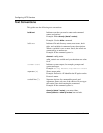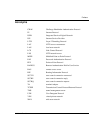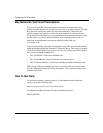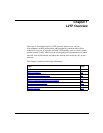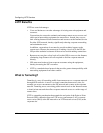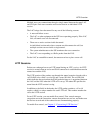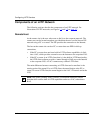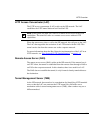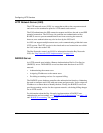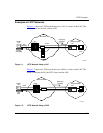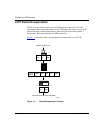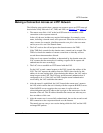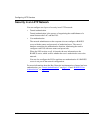
L2TP Overview
303532-A Rev 00
1-3
Multiple users can communicate through a single tunnel between the same LAC
and LNS pair. Each user transmits and receives data in an individual L2TP
session.
The LAC brings down the tunnel for any one of the following reasons:
• A network failure occurs.
• The LAC or other equipment at the ISP is not operating properly. If the LAC
fails, all tunnel users are disconnected.
• There are no active sessions inside the tunnel.
An individual session ends when a remote user disconnects the call, but
multiple sessions can run inside a single tunnel.
• The system administrator at the ISP terminates the user connection.
• The LAC is not responding to a Hello packet from the LNS.
For the LAC to reestablish a tunnel, the remote user has to place a new call.
L2TP Sessions
Packets are exchanged across an L2TP tunnel during an L2TP session. An L2TP
session is created when an end-to-end WAN connection is established between the
remote host and the LNS.
The L2TP portion of the packets sent through the tunnel contains a header with a
call ID field (also called a session ID) and a tunnel ID field. The call ID field,
which indicates the session that the WAN packet belongs to, is negotiated between
the LAC and the LNS when the L2TP call is set up. The tunnel ID specifies the
tunnel that the L2TP session is using.
In addition to the fields in the header, the L2TP packet contains a call serial
number, which is a unique number for each L2TP call. This number matches the
call to the L2TP session.
For an L2TP session, you can enable flow control. Flow control manages
congestion across the connection, ensures that packets are not lost, and makes sure
the devices at each end of the connection are communicating properly.
To enable flow control, see Chapter 3
, “Customizing L2TP Services.”






